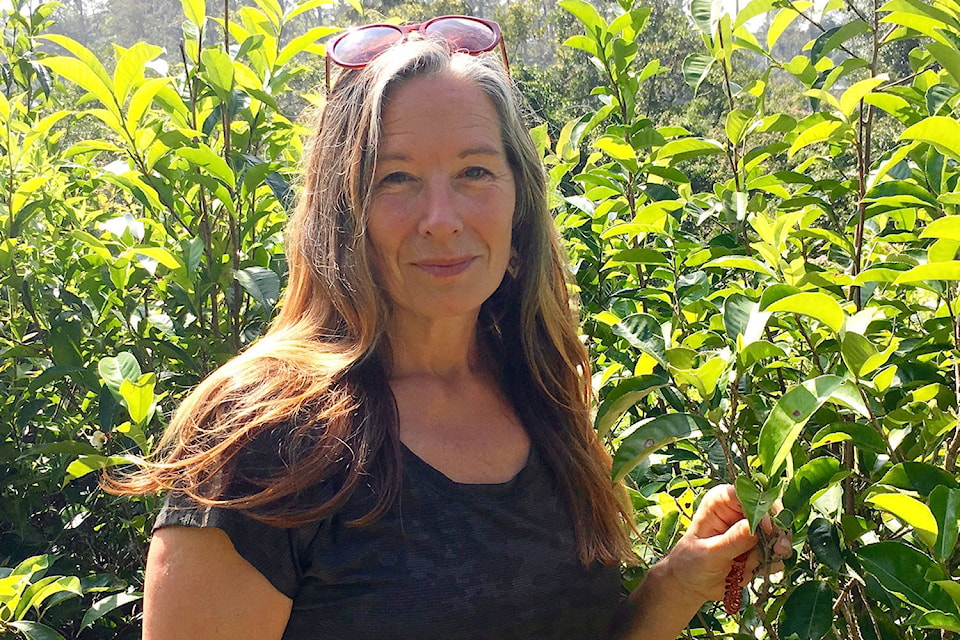Linda Geggie
For the Saanich News
Local Flavour has been on hiatus as I was fortunate to travel with my two teenage sons and husband to Asia for six weeks. We hadn’t planned it as a holiday but as a chance to spend time together as a family and learn more about this incredible planet and its people. Both of my boys were tasked with reporting back to their classes about their trip with a particular focus on food and culture. I may have had a slight influence on that topic.
We spent a good deal of time in Sri Lanka, an island off the southeastern tip of India. We knew little about it ahead of time and were duly impressed by the diversity of landscape, the people we met and of course Sri Lankan cuisine. One of the things we chose to do at the recommendation of a friend was travel with a car and driver. We were met by Mayura our guide at the airport and over the course of our time together learned what we could about Sri Lanka. We also studied a little Sinhalese spoken by the Sinhalese people, the predominant group in Sri Lanka, numbering over 16 million. To be honest, we managed to master thank you “istuti”, but not much more that was intelligible.
There is no better way to experience a country than having a local show you what they love about their home. We tasted a broad range of local food and learned a little about farming practices, especially rice growing. While rice was clearly a major activity in the lowlands of the south, it was tea that dominated the central highlands. We quickly learned that tea not only shaped the landscape but also the history of Sri Lanka. Tea is also something from Sri Lanka we all have tasted here in Canada, the teas of Ceylon.
Under British colonial rule, Sri Lanka was called Ceylon. It is during this time, 1867 to be precise, that a young man named James Taylor established a tea plantation near Kandy in the highlands. Just six years later the first shipment of Ceylon tea headed to Britain. By 1965 Sri Lanka became the largest tea exporter in the world. Now the tea industry has grown to be almost a $2 billion industry and employ over 1 million people in the country. Driving in the highlands the expanse of this industry is incredible. Every hillside is covered in tea bushes. It was not lost on me how this monocrop had taken over and that there was not room for much else, like vegetable and food crops that were relegated to intensely cultivated terraced hillsides near the villages.
The growth of the tea plantations was facilitated by companies bringing cheap Tamil labour from India. The lack of rights and citizenship and ongoing oppression of the Tamil by the predominantly Sinhalese population and its government were the roots of the Sri Lankan civil war that erupted in the 1980s and lasted over 25 years. The Sri Lankan Army defeated the Tamil Tigers in 2009 binging the war to an end, but not without the loss of an estimated 80,000 to 100,000 people. Today there are ongoing court proceedings around the crimes against humanity that occurred during the war. So the tea we drink, is thanks to a system of colonization that is not pretty, yet as Mayura our guide points out, it is a major source of employment for a million people in the country. It left me wondering about how many of those tea plantations are actually owned by Sri Lankans today?
We visited the major tea growing area of Kandy. It is famous for mid-grown tea, named for the elevation that it is grown. Most tea plantations range at elevations of 2,000 to 4,000 feet. We hiked through a number of plantations and learned about the different varieties. I also learned the hard way that leeches are abundant! The different teas grown are basically many varieties of three types of teas: black tea, green tea, and white tea. Each comes from different stock from China, India, Indonesia, Japan and Brazil, and has its own growing niche and characteristics. Tea is basically grown, harvested by hand and then dried in large drying sheds. One of the things that I was interested to learn was that there are a growing number of tea cooperatives and organizations like Fairtrade, Ethical Tea Partnership and the Small Organic Farmers Association working in Sri Lanka.
Visiting Sri Lanka gave me a lot to ponder about tea. Coming from Irish descendants, I started drinking tea with my granny when I was very young, and even though I started making my own teas as an adult, I still love a cup of English Breakfast. The next time you sit down for a cuppa, have a look. Where is it grown? It could have come from the very tea plantations that we visited. To get to you it had to pass through a long chain of growers, pickers, brokers, exporters, manufacturers, wholesalers and retailers. This is a far cry from Thomas Lipton’s advertising slogan when he started his company: “Direct from the tea gardens to the teapot.” There is a lot to that cup of tea.
Linda Geggie is the executive director with the Capital Region Food and Agriculture Initiatives Roundtable and can be reached at lgeggie@cfair.ca.
